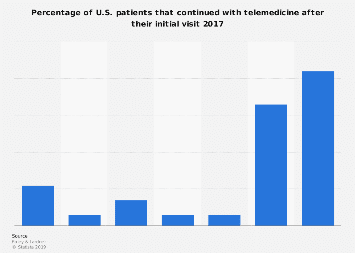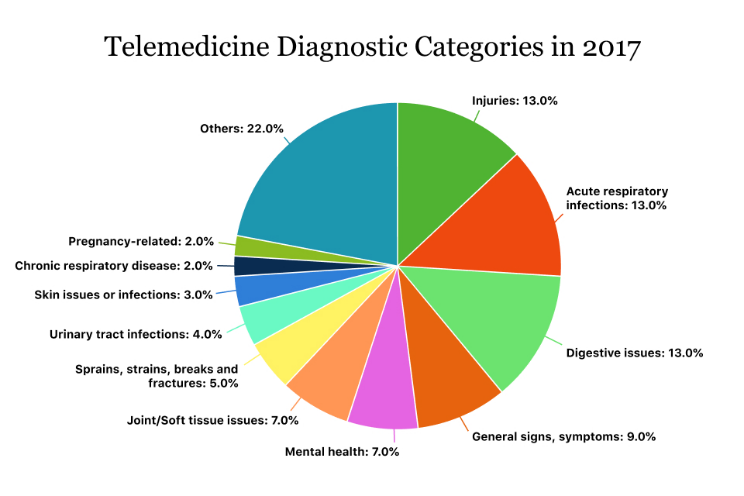Understanding Telemedicine by Orla D. (Year 8)
Orla D. took part in the Blott Matthews Challenge, which encourages students to explore the challenges and rewards of engineering.
"I became interested in this topic because I heard people talking about it and I thought it would be interesting to research and find out more about it for my scholars essay especially as it has become a lot more relevant during Covid-19." Orla D.
Introduction to Telemedicine
Telemedicine is the use of technology and computers, phones, video and digital transfer of images by doctors and nurses and other medical professionals to diagnose and treat patients and exchange medical details remotely instead of an in-person meeting. There are three types of telemedicine which are all used for different aspects of medical care.
- The first type is called store-and-forward. This type of telemedicine is where data, for example medical images, are sent to a specialist. This practice is common in dermatology, radiology and pathology.
- The second type is remote monitoring or self-monitoring. This uses different devices to continuously monitor patient data. This is used a lot to monitor things like diabetes, asthma and cardiovascular disease.
- The third type is real time interactive services. These services can provide real time and immediate interactive services to patients who need medical attention. For example, telenursing provides remote nursing services to patients over the phone. In this way, diagnoses can be made, and symptoms can be monitored. This is very useful for minor ailments and illnesses. Another example is tele pharmacy where medicines can be monitored, and patients can be given advice over the phone. Refill prescriptions can be given without patients having to go to a pharmacist. Telerehabilitation is where usually video and webcams are very important to communicate symptoms and provide rehabilitation therapy for patients.
Uses of telemedicine
Telemedicine is useful for people with diseases such as diabetes heart disease and skin disorders in the developed world these are some of the most widespread commonly occurring diseases. According to the World Health Organisation in the top 10 causes of non-infectious disease in the developed world include cardiovascular disease and diabetes. Studies show that 1 in 10 Americans have diabetes that is 34.2 million people.
This is an increase from 2015 when a study showed that the average amount of US citizens with diabetes was 30.3 million. These diseases are very costly to health services and are very time consuming to medical professionals. Telemedicine lends itself to the management of these types of diseases and therefore can offer large cost savings and time savings to the governments who fund health care who support these illnesses.
For people who live in remote locations, who do not have access to specialist centres, for elderly people, disabled people and communities whom there is not a good public transport service telemedicine offers a way for these people to stay in touch with their health care providers and to ensure that their illnesses are properly managed.
For third world countries or countries where there is instability telemedicine could offer a lifeline to the people who might otherwise not have any access to medical care. All they need in this situation is access to a phone line or and internet signal-not necessarily their own but even using a community hub.
One of the best things about telemedicine is that if it were accessible to all it would impact everyone and be a major asset. Everybody could use it instead of going into possibly infected doctors' surgeries and older at-risk people or people who struggle with motor conditions could schedule appointments from the comfort of their own home instead of having to travel unless it was absolutely necessary.
Benefits of telemedicine
If telemedicine became more widely used, it would have numerous benefits for both the patient in need of medical support and the healthcare supplier.
For example, a health review in 2012, evaluating the use of telemedicine for treating chronic heart failure found many advantages. These included lower admission rates, much shorter hospital visits and stays, and ultimately fewer deaths. However, this is only one example.
Other benefits for patients are that telemedicine can be extremely helpful and reliable when assisting to treat many more simple and less urgent medical illnesses. It is proved to be most successful when the patient gets direct information about their condition or symptoms. For many patients, the cost of treatment and advice using telemedicine is less, and it is shown that people who use telemedicine spend a lot less of their time waiting in hospitals and doctors' surgeries. Also, for people who would find it much more of a challenge to get out of their home and go to a surgery or hospital, for example people with disabilities, older people or people with severe anxiety and would rather communicate their medical needs from the comfort and familiarity of their own home, telemedicine improves easy access to care in a major way.
My final benefit point is that of one relative to the situation in the world today. Telemedicine is one of the most guaranteed ways to make sure that if you thought you had a contagious illness, such as Covid-19, you would prevent spread of the illness or at least slow the spread of infection. If you do choose to visit a doctor's office, you are surrounded by many possibly vulnerable or contagious people. By doing this you make yourself susceptible to illnesses and risk the chance of infecting others. This is incredibly dangerous for yourself, if you have underlying medical problems, or for others with weaker immune systems to your own. By using telemedicine, you decrease the threat of contracting contagious illness or passing one on to others.
Benefits of telemedicine for healthcare workers
A whole other area of benefits of telemedicine is not for patients but for medical professionals. Doctors and nurses who offer telemedicine services could gain several benefits, including lower expenses and increased income. Doctors would have lower costs to run their surgeries. For example, they might not need a receptionist full time and they would not need such big surgeries, with examination rooms and because telemedicine is quicker it takes less time to see many more patients. This would increase doctor's income even more.
Another benefit is that when doctors see patients by using telemedicine, they do not have to worry about the risk of catching an illness or being exposed to infection themselves. They also do not have to worry about passing on infections to their patients. This is very relevant to the current situation with Covid-19 and most people who needed medical help through their GP’s would have used telemedicine instead of scheduling an in-person check-up. Telemedicine can be very easy for the patent and the doctor and therefore everyone feels much happier with the service they are getting.
Possible disadvantages of telemedicine
While telemedicine could be very important and offer lifesaving advise to people in third world countries not all of these people or places have the internet or phone equipment needed for telemedicine to work. The diseases that cause most deaths in third world countries tend to be the infectious diseases such as plasmodium, the pathogenic protists that causes malaria. Telemedicine is not really useful in this situation so it would be more of use for less life threatening but still dangerous diseases.
Telemedicine has been proven to be very useful for certain diseases, but not all diseases such as malaria, as said above.
Sometimes a proper diagnosis cannot be made unless the doctor is able to see and examine the patient in the surgery. If a disease is misdiagnosed because the doctor has missed information or was unable to see the whole medical situation it could have a fatal outcome for the patient.
Another possible flaw with telemedicine is that it is relaying on the technology working for it to be of benefit for people, especially for people who need constant monitoring and for people where time is important for their medical wellbeing.
For some patient's telemedicine will not offer the security and reassurance that a physical visit to the doctor's surgery will. For some people, especially elderly patients, the use of the internet and video calls and other technology skills are challenging and, in some cases, not possible.
My conclusion on the use of telemedicine
In conclusion, telemedicine offers great benefits to many people both patients and doctors. It can improve the management and control of many diseases which are becoming more and more widespread in the world today. Because of the increase in these diseases cheaper and more efficient ways of managing patients are necessary and telemedicine meets this need. However, it is clear that telemedicine is not a solution for every patient or every illness and for certain conditions nothing replaces a visit to trusted medical professional who can provide support and information to ill patients. There is a huge untapped potential for telemedicine in third world countries but until such time as better access to phone lines and internet is available to the many in these countries rather that the few the true benefit of telemedicine will not be seen.
A graph to show the percentage of Americans who continue to use telemedicine after initial use. Graph from Statista.

A graph to show telemedicine diagnostic categories. Pie chart from Drugwatch.

Return to Scholars' Showcase